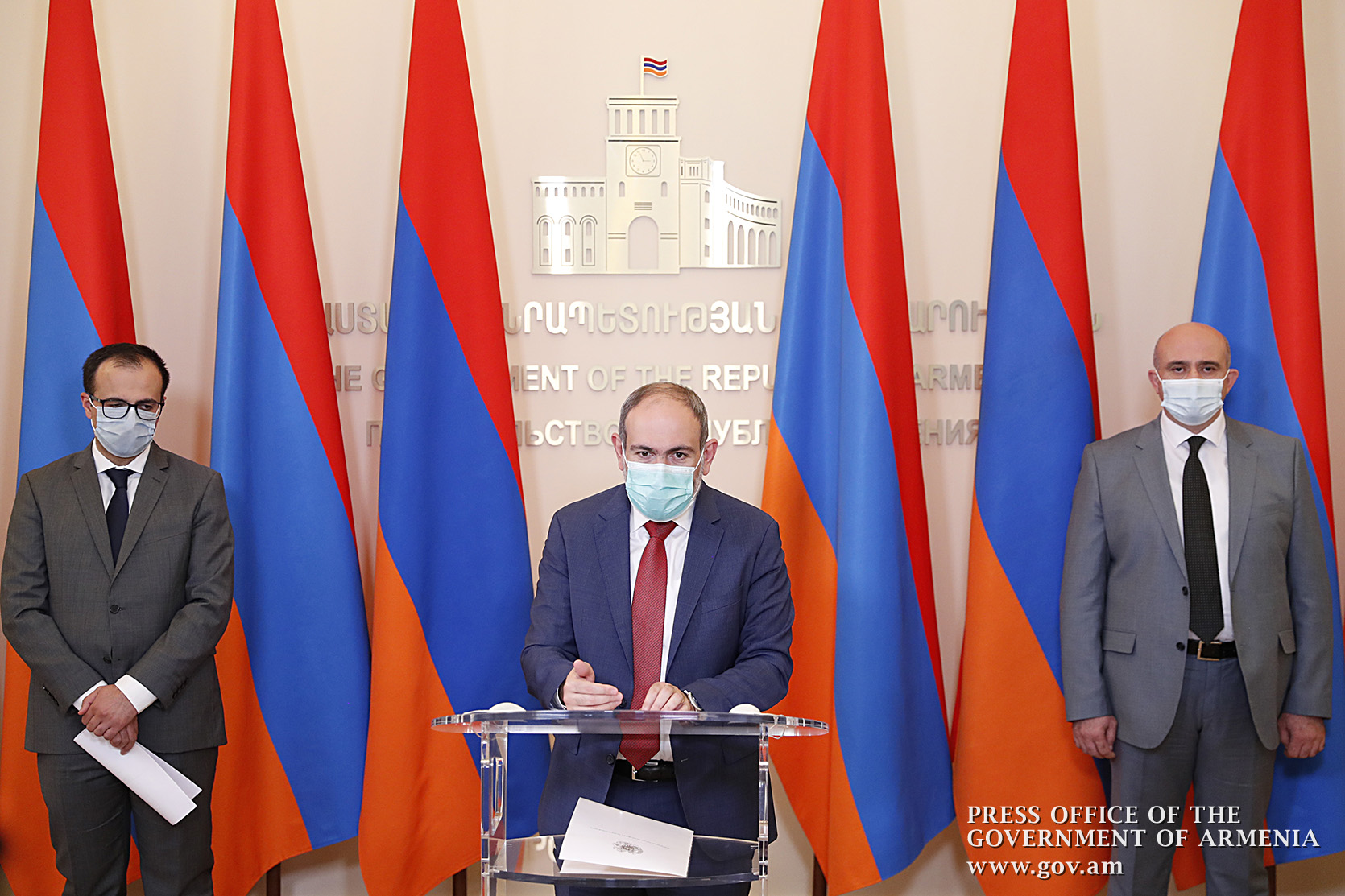
YEREVAN—Health officials in Armenia say that while the pandemic situation in the country remains critical, the adopted public health policies are in line with the latest recommendations based on international data regarding virus mitigation. “Wearing a face mask is critical for halting the spread of the virus,” insisted Artavazd Vanyan, director of the National Center for Disease Control (CDC) on Monday. Notably, the CDC director stressed the importance of wearing masks correctly even when interacting with neighbors and maintaining physical distance when hosting small gatherings in one’s home as crucial to reducing the contagion rate.
Incorrect mask wearing and intra-community transmission have been cited as the primary sources of new cases recently. Health Minister Arsen Torosyan started releasing the street names of recent COVID-19 patients on his Facebook page in an effort to visualize contagion clusters. “The Health Ministry’s recent analysis has uncovered that many of the patients testing positive for COVID-19 live in the same neighborhood, the same street or even the same building,” Torosyan announced on Monday. “This data comes to confirm that people aren’t wearing face masks in their neighborhoods.”
The Prime Minister also touched upon this issue during a question and answer period that same day. Responding to a journalist’s question about the effectiveness of lockdown measures, Pashinyan clarified that enforcing a stricter or longer lockdown would likely not have yielded any significant difference in rates. “Sure, we could clamp down on people strolling on Republic Square, but it would be impossible to effectively police the movements of neighbors having coffee or visiting each other in their communal yards––which is a much more serious source of contagion,” Pashinyan said. “Extending the lockdown would just result in more bored neighbors spreading the virus.” He reiterated that the only solution is wide public compliance with mask wearing guidelines. Pashinyan also admitted to several errors on the part of his government in handling the pandemic, including the failure to encourage social distancing earlier.
Despite those comments, the Prime Minister did issue orders for law enforcement to begin routine patrols of courtyards to ensure compliance with public health directives. Other government and law enforcement bodies have been deputized to assist the police in monitoring compliance, greatly expanding their capacity to do so. They have also been instructed to hand out free masks to anyone caught outside without one. Still, the fine for not wearing a mask in public stands at 10,000 AMD ($20). An additional 10,000 AMD fine may apply to those not carrying valid government-issued identification. Regulators have issued almost 35 thousand fines to individuals and businesses for violating health and safety protocols since the State of Emergency began in March. Almost a thousand restaurants and supermarkets have also been forced shut down due to violations in that same time period.
Several weeks since the public wearing of masks became mandatory, the daily rate for new infections seems to have slowed. While the number of new cases remains in the triple digits—with 544 on Wednesday—it has dropped since hitting an all-time high of 766 cases on June 7. This trend continues in spite of a considerable expansion of testing capabilities. Since Armenia began indigenous production of COVID-19 testing kits, tests have been performed at an average rate of 2,500 per day, with the target goal of 3,000 per day in sight. Notably, the positive testing ratio has also dropped to a quarter, from an average of 40 percent at the beginning of the map, despite the number of tests more than doubling.
The Health Minister expressed optimism at those figures on Wednesday. In a Facebook post, Torosyan shared a graph which had projected Armenia as passing the 20-thousand case mark by June 12. The actual figure for that date was 15,281. “The mass anti-epidemic movement is slowly yielding results. Despite the high number of total cases, the epidemiological trends over the last 10 days are more positive than expected,” Torosyan wrote. The Ministry of Health also announced that there were no more shortages of hospital facilities to treat COVID-19 cases for the moment.
While the overall situation shows modest signs of improvement, hospitals continue to struggle to care for critical cases. This week, overwhelmed doctors in Armenia were reinforced by a medical team from France, which headed directly from the tarmac at Zvartnots Airport to the St. Gregory the Illuminator Medical Center—one of the main facilities dealing with the pandemic—to lend a hand. Their mission is expected to last at least 10 days.
Armenia has registered a total of 18,033 cases of COVID-19, of which 10,818 are still active. More than 300 people have died since the pandemic reached the country on March 1st, making it the worst-affected country in the Caucasus. While the number of new cases steadily slows in Armenia, it is accelerating across the border in Azerbaijan, resulting in the government there imposing new lockdown measures. Georgia, which has earned international praise for its effective handling of the pandemic, has seen a slight uptick in new cases just days after the country lifted the last of its lockdown measures and mulls welcoming international tourists again.


So as not to allow corona virus data to be used as a political tool the only measurements that matter and cannot be twisted for political benefit are.
1. Number of hospitalization. – This reflects the strain on the hospital system. Better still is the % of hospital capacity used to house covid patients.
2. The % of positive cases against total tests conducted.
Most other data can be misleading and may cause unnecessary restrictions.
JM
Thank you Armenian Weekly for this regular, balanced and clear description of the facts on the ground.
You are my reliable source of information about things Armenian.